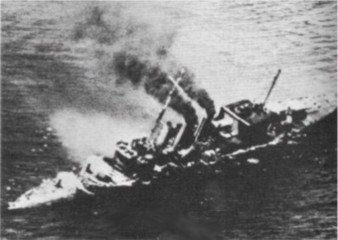On Easter Sunday, 5 April 1942, the Imperial Japanese Navy launched an attack against the British that were based on the Coastal area of Ceylon. The objective was to disrupt the war effort of British Commonwealth nations and force the British Eastern Fleet to leave Asian waters.
The British had occupied the coastal areas of Ceylon since 1796, yet British troops had not been regularly based there since 1917. However, due to Japan's entry into the war and after the fall of Singapore, Ceylon became a front-line British base. The Royal Navy's East Indies Station moved to occupy the area.
After the sinking of Prince of Wales and Repulse, an attack by the Japanese seemed inevitable. Despite this, preparation for defence were lackadaisical- apart from the deployment of an RAF squadron at the Colombo race course.
The Japanese fleet, consisting of five aircraft carriers plus supporting ships, were located by a PBY Catalina aircraft flown by Squadron Leader Leonard Birchall, on 4 April 1942. The Catalina was shot down by the Japanese, but he did manage to to radio the Japenese position and alert Colombo.
Despite the warning given by Birchall, the air strike on Colombo achieved near-complete suprise. The reason being that the British radars were not operating because it was Sunday- they were shut down for routine maintenance.
The Japenese high command felt the biggest shock of the day, however. They had expected to catch the remnants of the British fleet at anchor, but most of the British Eastern Fleet was at Addu Atoll. When the Japenese attacked there were only three ships at Colombo.
The attack began at 07:30 on 5 April 1942, and carried on all through the day- the last attack being at 18:00 just before sunset. It was followed a few days later by a similar attack on Trincomalee.
